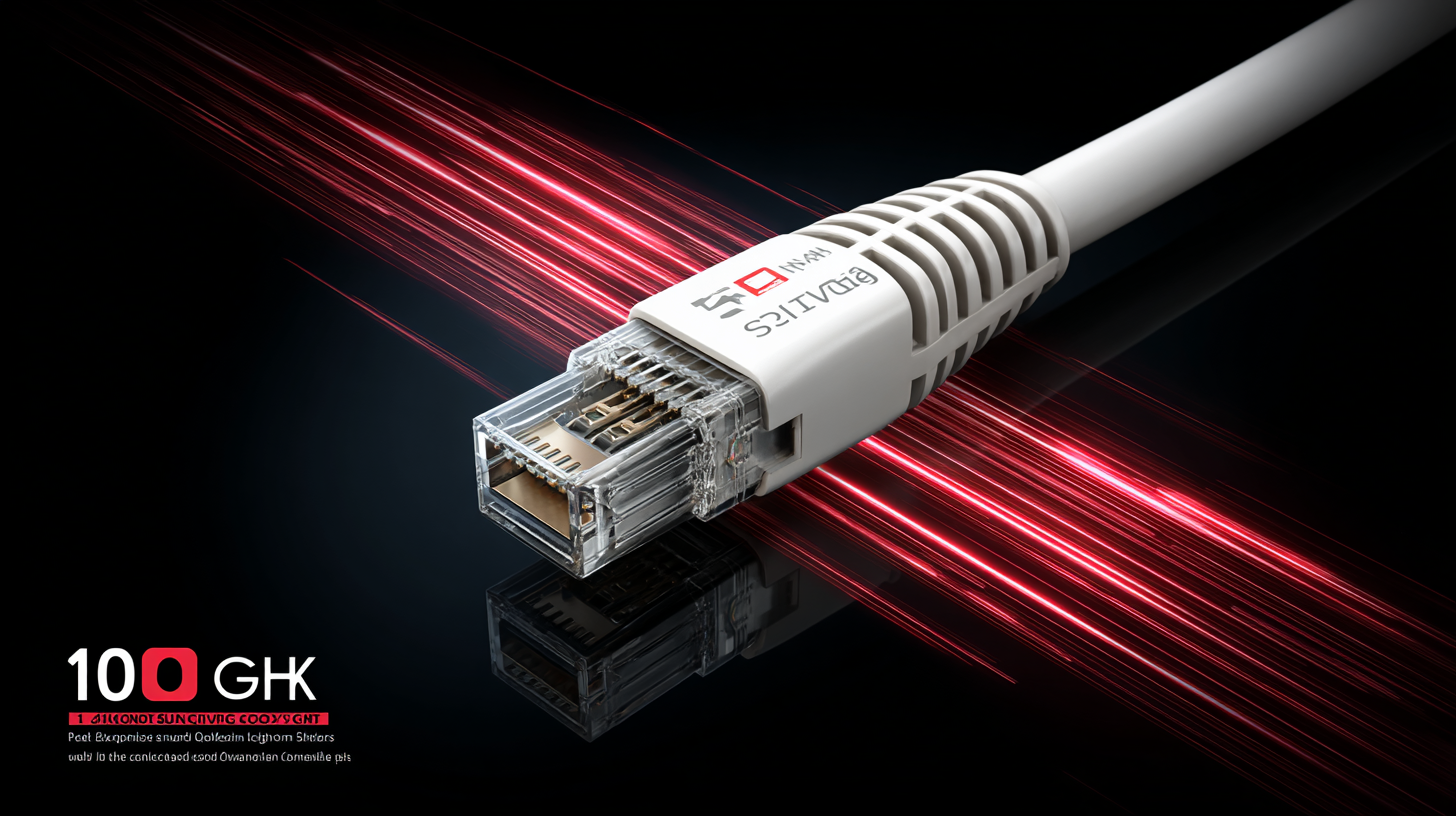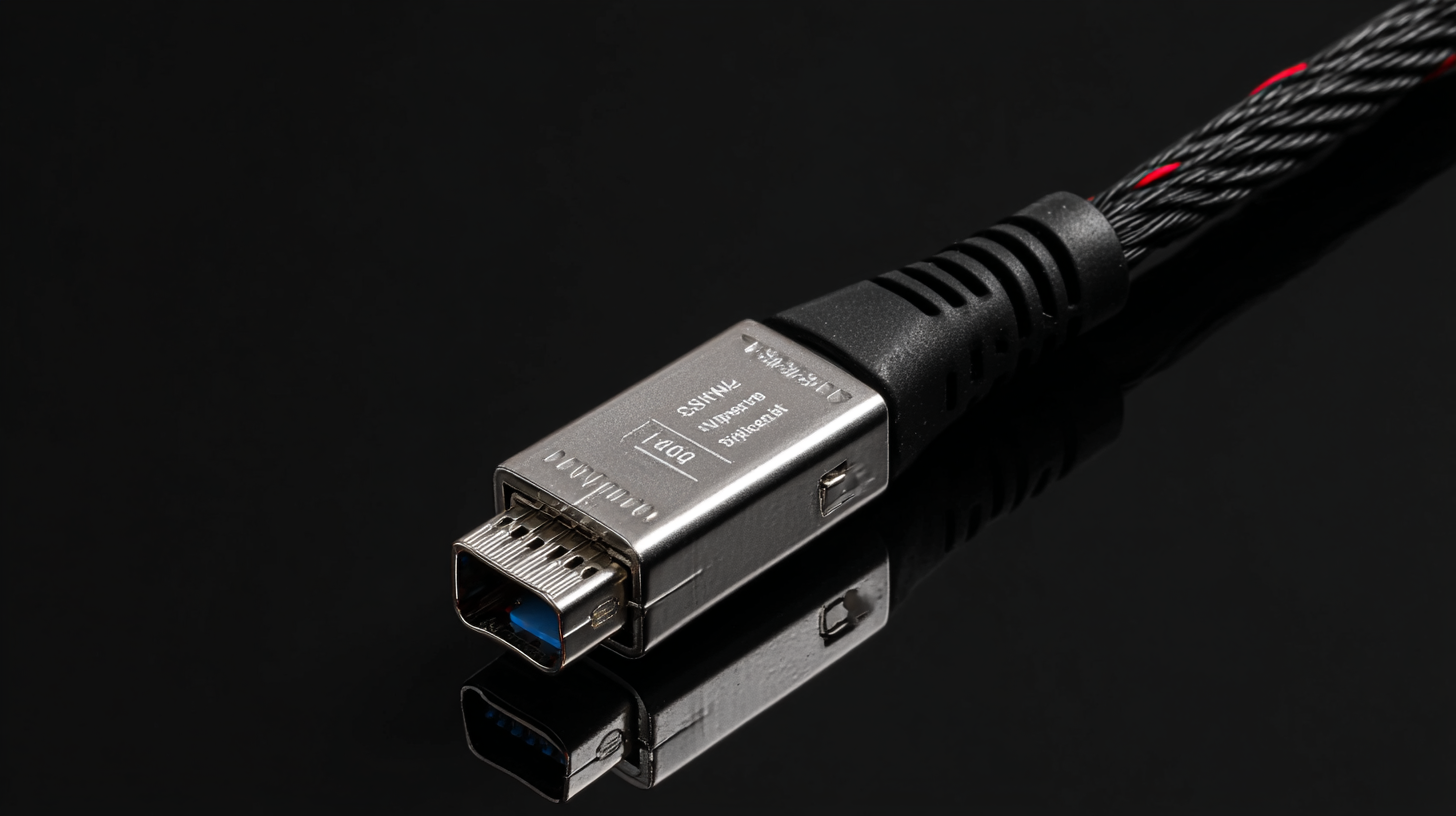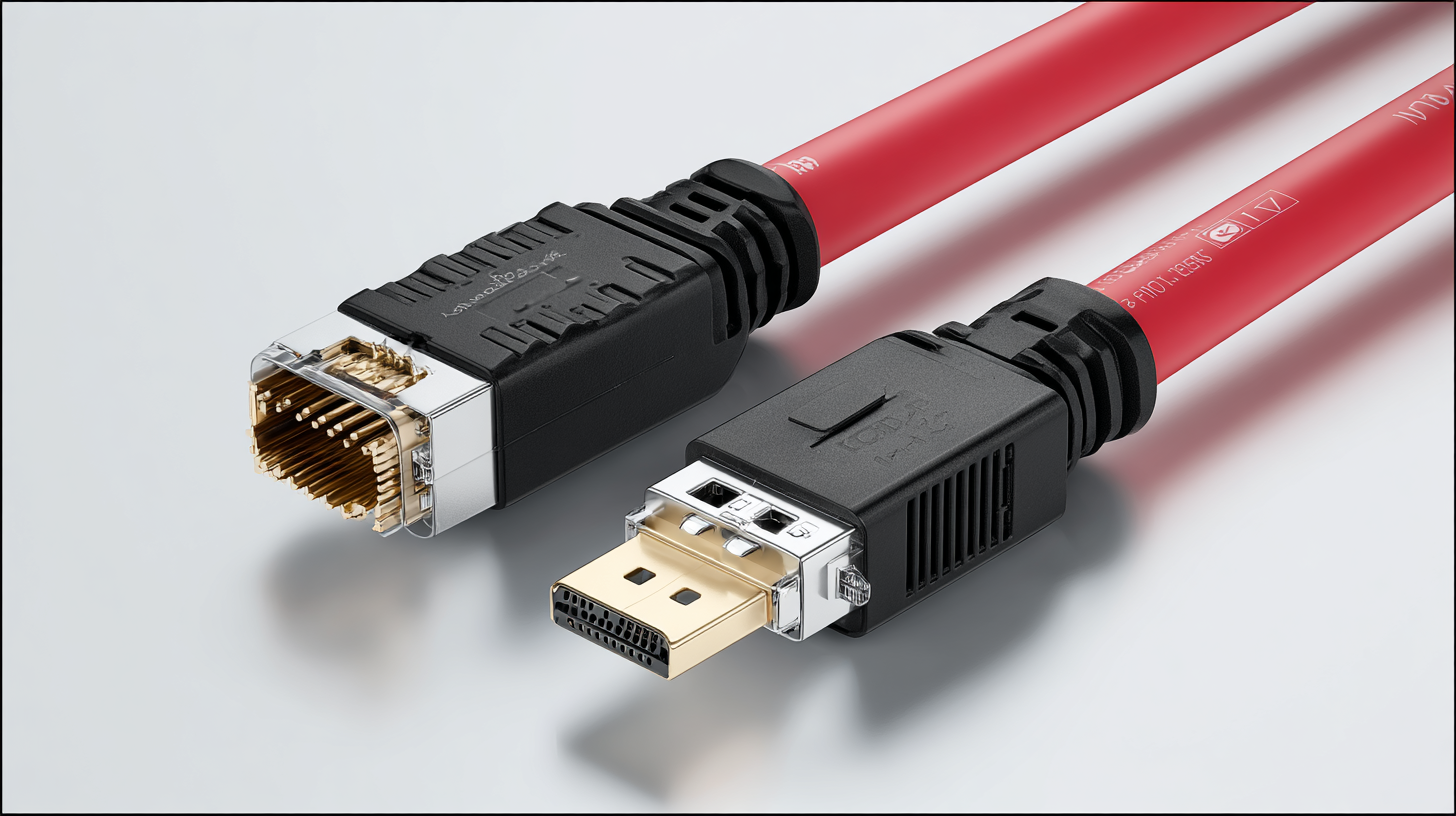Leave Your Message
In today's rapidly evolving digital landscape, high-speed data transmission is more critical than ever. As businesses increasingly rely on seamless connectivity for cloud computing, data centers, and video streaming, the demand for efficient networking solutions like the 10G SFP+ Active Optical Cable has surged. According to a report by ResearchAndMarkets, the global optical fiber cable market is projected to reach $19.68 billion by 2026, underscoring the vital role that high-performance cabling plays in modern infrastructures. The 10G SFP+ Active Optical Cable stands out due to its superior bandwidth, reduced power consumption, and longer transmission distances compared to traditional copper cables. This blog will explore ten compelling reasons why adopting the best 10G SFP+ Active Optical Cable can profoundly enhance your networking capabilities, ensuring that your organization stays competitive in an increasingly data-driven world.

In today's fast-paced digital landscape, efficient data transmission is crucial for organizations. One of the standout solutions for achieving this is the 10G SFP Active Optical Cable (AOC). By utilizing advanced optical technology, 10G SFP AOCs offer significant advantages such as reduced power consumption, lightweight design, and longer transmission distances. According to a recent report by the International Data Corporation (IDC), businesses utilizing these cables can achieve data rates of up to 10 Gbps over distances exceeding 100 meters, making them ideal for data centers and enterprise networking environments.
When choosing 10G SFP AOCs, consider the following tips: ensure compatibility with your existing hardware to avoid connectivity issues and assess the specific distance and bandwidth requirements of your network. Additionally, look for cables with built-in error detection and correction capabilities, as they can significantly reduce data loss during transmission.
Furthermore, many enterprises have reported that 10G SFP AOCs increase their overall network performance and reliability. A study by MarketsandMarkets noted that companies deploying optical cables experience up to a 30% increase in network efficiency. This improvement not only leads to faster data transfer rates but also reduces latency, thereby enhancing the overall user experience in applications ranging from cloud computing to video streaming services.
Active and passive optical cables (AOCs and POCs) serve distinct purposes in networking, each with unique advantages tailored to specific applications. According to a report by the International Data Corporation (IDC), the demand for high-speed connectivity continues to grow, driving the need for high-performance cables. Active optical cables integrate transceivers and cables into one unit, offering enhanced flexibility and longer transmission distances. This makes them ideal for data centers and high-bandwidth applications, providing consistent performance over distances of up to 100 meters, as noted in a recent study by the Ethernet Alliance.
On the other hand, passive optical cables, while generally more affordable, lack the built-in signal amplification that characterizes their active counterparts. As the market evolves and organizations seek to maximize bandwidth efficiency, active optical cables are becoming increasingly favored for high-speed applications. A report from the Optical Fiber Association indicates that AOCs can support data rates of up to 40 Gbps, making them a compelling choice for organizations aiming to future-proof their infrastructure. The nuanced differences between AOCs and POCs are critical for making informed decisions about networking infrastructure investments.
This bar chart illustrates a comparison between Active Optical Cables and Passive Optical Cables across different metrics including cost, distance, power consumption, weight, and data rate. Active Optical Cables tend to have higher costs and can support longer distances, while Passive Optical Cables are cheaper and lighter.
The use of 10G SFP Active Optical Cables (AOCs) is becoming increasingly prevalent in various real-world applications, particularly in data centers and high-performance computing environments. According to a recent market report, the demand for optical transceivers is expected to grow significantly, with the SFP+ and SFP form factors leading the charge due to their balance of performance and cost efficiency. AOCs provide the advantage of longer transmission distances compared to traditional copper cables, making them ideal for interconnects in densely packed networks where space is at a premium.
In sectors such as healthcare, where real-time imaging and data processing are critical, 10G SFP AOCs offer a solution that minimizes latency and maximizes throughput. For instance, the advanced Camera Link HS standard facilitates high-bandwidth, low-latency connections between cameras and frame grabbers, allowing seamless transmission of high-resolution images. This capability is vital not only in medical imaging but also in applications involving machine vision, automation, and other demanding fields where data integrity and speed are paramount. As the optical transceiver market continues to evolve, AOCs are positioned to play a crucial role in meeting the increasing bandwidth needs of modern networking infrastructures.
| Reason | Description | Real-World Application | Distance Supported | Cost Efficiency |
|---|---|---|---|---|
| High Bandwidth | 10G SFP AOC provides high bandwidth for data transfer. | Data centers and enterprise networks. | Up to 300 meters. | Lower cost compared to traditional copper cables. |
| Lightweight | Made from lightweight materials, reducing strain on connections. | Optical connections in server racks. | Optimal for short to medium distances. | Cost-effective for large installations. |
| Low Power Consumption | Reduced power usage compared to copper counterparts. | Large enterprises aiming to reduce energy costs. | Supports up to 10G speeds up to 300m. | Significally lower total cost of ownership. |
| Improved Signal Quality | Less signal degradation over distance compared to copper. | Telecommunications and broadcasting. | Ideal for long-distance connections. | Reduced maintenance costs. |
| High Flexibility | Flexible cables can be routed in tight spaces. | Dynamic data centers and offices. | Effective for various distances depending on model. | Adaptable solutions for various needs. |
| Future Proofing | Supports speed upgrades to meet future networking demands. | Educational institutions and tech companies. | Scalable networks for future enhancements. | Higher return on investment. |
| Enhanced Security | Reduced risk of interference and eavesdropping. | Financial institutions requiring secure data transfer. | Supports up to 10G connections effectively. | Minimizes risk-related costs. |
| Quick Installation | Simple to install with plug-and-play functionality. | Rapid deployment for new networks. | Flexible lengths for various setups. | Lower labor costs due to ease of installation. |
| Compatibility | Works with various switches and routers. | Integrated systems in legacy and modern infrastructures. | Seamlessly fits into existing setups. | Saves costs on new equipment. |
| Environmental Resilience | Designed to withstand harsh environments. | Industrial applications and outdoor networks. | Functional across varied terrains. | Lower replacement costs due to durability. |
When choosing the right 10G SFP Active Optical Cable, there are several key factors to consider beyond just speed. First and foremost is the distance of the transmission; active optical cables are ideal for longer distances compared to traditional copper cables, making them a preferred choice for data centers and high-performance networking environments. Additionally, examining compatibility with existing equipment is crucial to ensure seamless integration within your network infrastructure.
Tips: Always check the specifications of your networking devices to confirm their compatibility with the 10G SFP Active Optical Cable you're considering. Moreover, consider the durability and flexibility of the cable, especially if it will be deployed in dynamic environments where frequent adjustments may be needed.
Another important aspect is the cable's performance in terms of bandwidth. With the increasing demand for data transfer and applications like 25G or 50G networking, it’s essential to assess whether your setup can handle higher speeds without degradation. Investing in the right cable now can save on future upgrades, so factor in both current and anticipated needs when making your selection.
Tips: Look for cables that offer a good balance between performance and cost, and always opt for trusted brands that provide warranties. Making informed choices about your 10G SFP Active Optical Cables can enhance your network's performance for years to come.

When considering networking solutions, the cost-effectiveness and long-term value of 10G SFP active optical cables cannot be overstated. These cables offer a unique combination of performance and affordability, making them an ideal choice for organizations looking to maximize their return on investment. With the ability to support high-speed data transfer over longer distances without significant signal degradation, 10G SFP active optical cables can reduce the need for additional hardware, thereby lowering overall infrastructure costs.

One tip for maximizing the value of your 10G SFP active optical solutions is to carefully assess your specific networking needs. Understanding your data flow and anticipated growth can help you select the right cable length and specifications, ensuring you are not overspending on unnecessary capabilities. Another crucial aspect to consider is the compatibility of these cables with existing equipment. By choosing components that seamlessly integrate with your current systems, you can avoid costly upgrades and disruptions.
In addition, regular maintenance and monitoring of your network infrastructure can significantly extend the lifespan of your optical cables. Implementing routine checks not only helps in identifying potential issues before they escalate but also ensures that your system operates at peak efficiency, further enhancing the long-term value of your investment.
